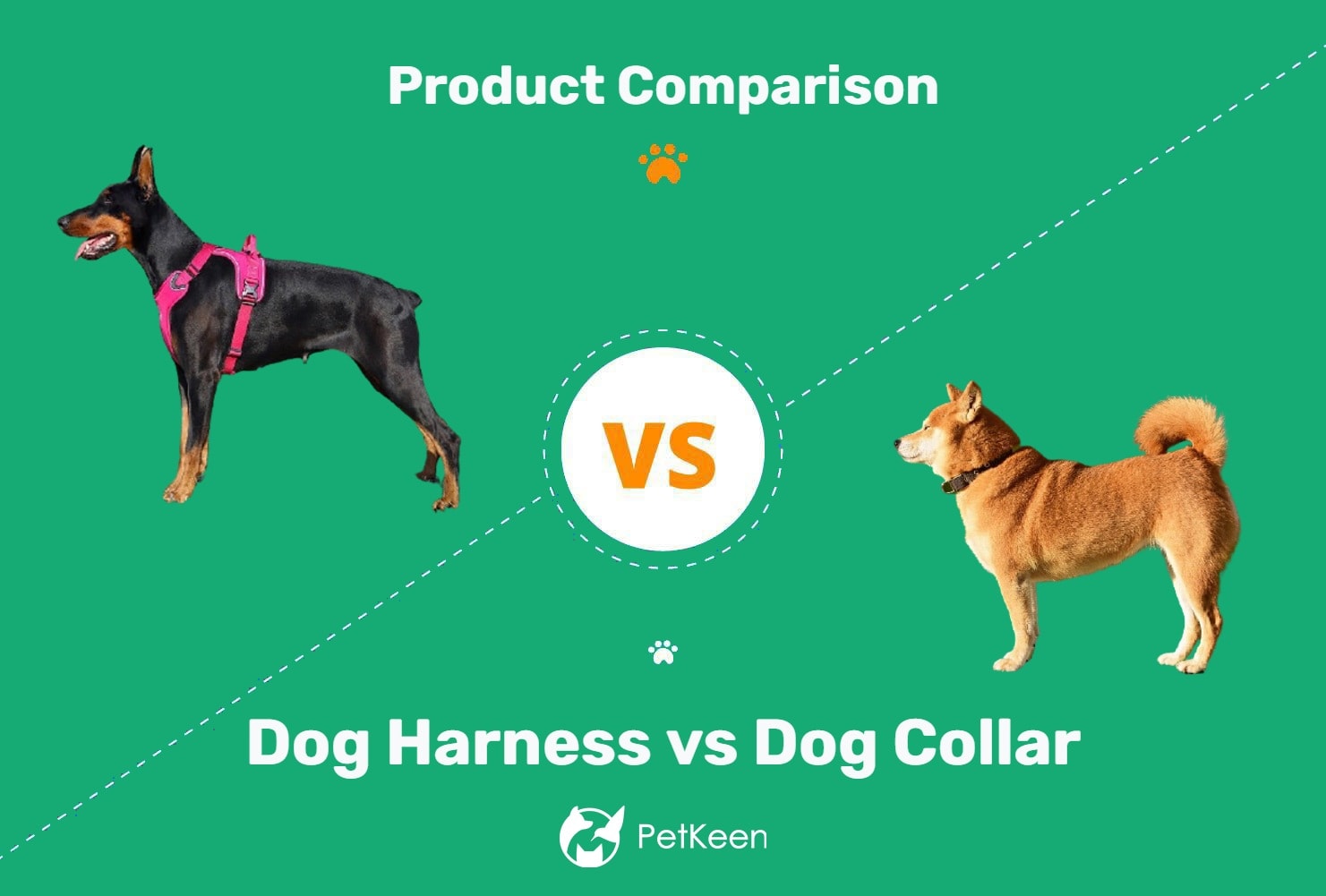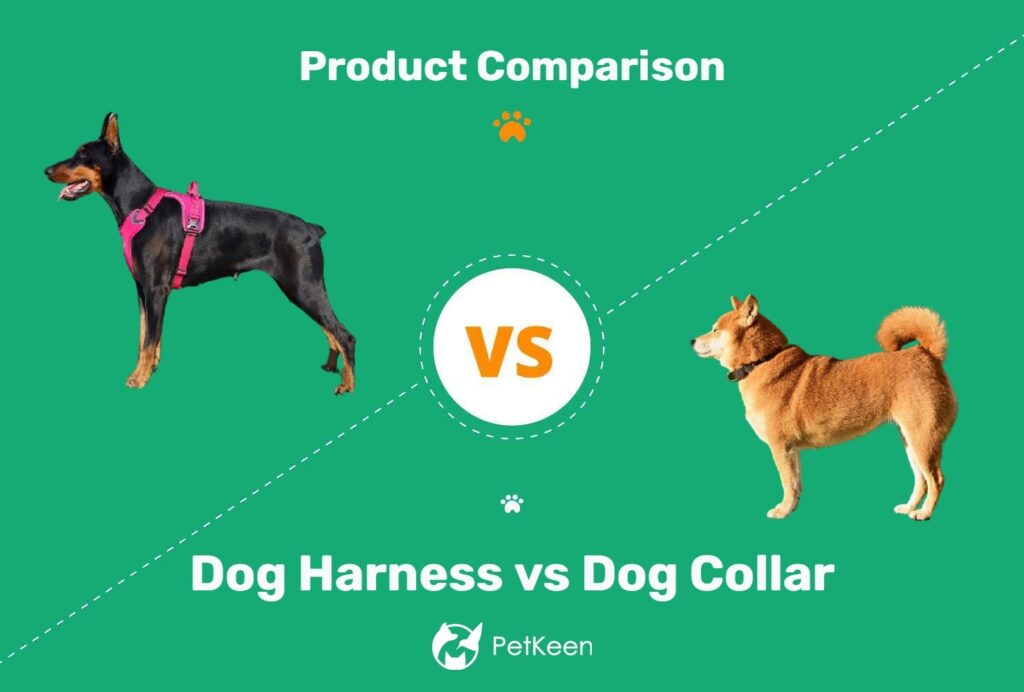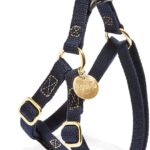Collars vs. Harnesses: Which is Better for Your Dog’s Health?
When it comes to choosing the best option for your dog’s health, one of the most common dilemmas pet owners face is collars vs. harnesses. While both provide different benefits, the right choice largely depends on your dog’s specific needs. Whether you have a playful puppy or an older dog with health concerns, understanding how each option affects your dog’s comfort, safety, and overall well-being can make all the difference. In this article, we’ll explore the advantages and disadvantages of both collars and harnesses to help you make an informed decision.
By the end of this article, you’ll not only understand which is better for your dog’s health but also know how to choose the perfect fit. Keep reading to find out whether a collar or a harness is right for your furry friend!
What is a Collar? Understanding Its Benefits and Drawbacks
Collars are one of the most traditional and widely used accessories for dogs. They come in various styles and materials, each serving different purposes—from holding identification tags to being a training tool.
Pros of Using Collars
Convenience: Collars are easy to put on and take off. This makes them ideal for daily use, especially for dogs that do not need constant control. You can quickly secure a collar for walks or outings, without the hassle of extra fittings.
Identification: One of the greatest advantages of a collar is that it can hold ID tags, ensuring your dog is identifiable if they wander off. This is crucial for safety, particularly in public spaces.
Training Aid: Certain types of collars, such as choke or prong collars, can be used for training purposes. When used correctly and under supervision, they can assist with behavior modification.
Cons of Using Collars
Risk of Neck Injury: The biggest concern with collars is the potential for neck injuries. When dogs pull on the leash, especially during walks or in moments of excitement, the collar places direct pressure on the neck, which can lead to serious health issues over time, including neck strain, collapsed tracheas, or spinal damage.
Limited Control: Collars provide less control over your dog’s movements compared to harnesses, especially if your dog is strong or tends to pull. This can be particularly problematic for larger or more energetic dogs, making walking and training difficult.
What is a Harness? Benefits and Considerations
Unlike collars, harnesses are designed to distribute pressure more evenly across a dog’s body, especially around the chest and shoulders. This can provide a safer and more comfortable option for both active dogs and those with health issues.
Pros of Using Harnesses
Improved Safety and Comfort: One of the key benefits of using a harness is its ability to prevent neck injuries. By distributing the force of pulling across the dog’s body, it minimizes strain on the neck and spine, reducing the risk of injury. This is especially beneficial for dogs with respiratory issues or those prone to pulling.
Better Control: Harnesses provide more control, making them ideal for training or walking larger, stronger dogs. With more secure attachment points and a snug fit, you’ll have a better grip on your dog, preventing sudden jerks or unexpected movements.
Reduces Pulling: Many harnesses are designed with features that help prevent pulling. For example, front-clip harnesses redirect the dog’s movement, discouraging them from pulling forward. This can make walks more enjoyable and manageable, even for high-energy dogs.
Cons of Using Harnesses
Complexity: Harnesses can be more complicated to put on compared to collars. Depending on the design, some require more time and effort to secure properly. This can be a deterrent for pet owners who are looking for something quick and simple.
Cost: High-quality harnesses tend to be more expensive than collars. While collars can often be purchased at a lower price point, a durable, well-fitting harness may require a bit more investment.
Health Considerations: How Collars and Harnesses Affect Your Dog
When deciding between collars and harnesses, it’s important to think about how each option impacts your dog’s health. The pressure and fit can affect their comfort, behavior, and even their long-term well-being.
The Risk of Injury with Collars
As previously mentioned, collars can put a lot of pressure on the dog’s neck, especially if they tend to pull. This pressure can cause long-term issues like:
Neck Strain: Dogs that pull on their collars can develop neck strain, which may lead to stiffness, discomfort, or more serious spinal injuries over time.
Breathing Problems: For dogs with respiratory issues (such as brachycephalic breeds like Bulldogs), collars can exacerbate breathing problems. The constriction on the neck may worsen symptoms like coughing, wheezing, or panting.
For these reasons, harnesses are often recommended as a safer alternative, particularly for dogs that pull excessively or those with existing health conditions.
Harnesses: Reducing the Risk of Injury and Providing Comfort
On the other hand, harnesses are designed to be more comfortable and safe for dogs, especially those with specific health concerns. By redistributing the pulling force over the dog’s chest and shoulders, a harness reduces the likelihood of injury to the neck or spine.
Prevents Neck and Spinal Strain: The design of a harness ensures that the pressure is evenly distributed, preventing damage to sensitive areas like the neck or throat.
Ideal for Dogs with Health Issues: Dogs that suffer from respiratory problems, neck injuries, or arthritis can benefit from harnesses because they provide a gentler way to guide and control the dog.
However, like collars, it’s crucial to ensure that the harness fits properly. An ill-fitting harness can cause discomfort, chafing, or even restrict movement, negating its benefits.
When to Choose a Collar and When to Opt for a Harness
Ultimately, the choice between a collar and a harness will depend on your dog’s behavior and health needs. Collars are a practical choice for well-trained dogs that do not pull and primarily need an identification tag. If you need an everyday option for quick outings, collars might be the simplest and most effective solution.
However, if your dog pulls, has respiratory issues, or you’re concerned about neck strain, a harness would be the safer and more comfortable choice. Harnesses are especially ideal for dogs with behavioral issues, as they provide better control and can even discourage pulling during walks.
Want to Shop for the Perfect Collar or Harness?
Finding the best collar or harness for your dog’s health is essential. Click here to browse through a variety of options on Found My Animal and find the perfect fit for your furry friend. Don’t forget to use the discount code mytopdeals10 at checkout for a 10% discount on your order!
Image:

This first half of the article sets the stage for a deeper dive into how collars and harnesses affect your dog’s health. By the end of the article, readers will have a comprehensive understanding of each option’s benefits, drawbacks, and which might be the best fit for their pet.
How to Choose Between a Collar and a Harness for Your Dog’s Health
Choosing between a collar and a harness is not just about convenience; it’s about ensuring your dog’s comfort and long-term health. Understanding the unique benefits and challenges of both will help you make an informed decision based on your dog’s needs, behavior, and any existing health concerns.
When Should You Choose a Collar?
While harnesses offer a variety of benefits, there are still times when a collar might be the better choice, especially for dogs that are well-trained or only need occasional identification. Here’s when you should consider using a collar:
- Well-Trained Dogs: If your dog is calm and doesn’t pull on walks, a collar is sufficient. It’s ideal for dogs that are already trained to walk beside you without tugging.
- Quick Outings: For short walks or bathroom breaks, a collar is more convenient. You won’t need to take extra time to adjust a harness, making it perfect for quick trips outside.
- ID Tags and Identification: Collars are great for holding identification tags and other important information, such as vaccination tags or pet licenses.
However, remember that even well-trained dogs can benefit from the safety features of a harness, especially during longer walks or activities.
When Should You Choose a Harness?
If your dog experiences discomfort with a collar or is prone to pulling, a harness is usually the best option. Here are some key reasons why a harness might be the right choice for your pet:
- Dogs That Pull: If your dog tends to tug on the leash, a harness will give you better control. By distributing pressure across the body rather than focusing on the neck, harnesses make walks more manageable and safer.
- Dogs with Health Concerns: For dogs with neck injuries, respiratory issues, or those prone to collapsing tracheas, a harness is a much safer option. It eliminates the risk of neck strain and allows for a more comfortable experience.
- Training: Harnesses provide greater control during training sessions, especially for puppies or dogs that are still learning how to behave on walks. They can help discourage pulling and improve leash manners over time.
Ultimately, a harness is a superior option for dogs that need more control or experience discomfort with traditional collars.
FAQs: Collars vs. Harnesses
What makes Found My Animal products unique?
Found My Animal products are designed with durability and comfort in mind. They offer a variety of high-quality collars, leashes, and harnesses made from sturdy materials like marine-grade rope and soft leather. These products combine functionality with style, making them perfect for both everyday use and outdoor adventures. Plus, their items are designed to be both comfortable and long-lasting, providing safety and style for your dog.
How can I use the discount code mytopdeals10 at checkout?
To use the discount code mytopdeals10, simply visit Found My Animal, select your favorite products, and proceed to checkout. At the payment screen, you’ll see a box to enter a discount code—just type in mytopdeals10 to enjoy a 10% discount on your purchase. Don’t miss out on this exclusive offer!
Are harnesses better for puppies than collars?
Yes, harnesses are generally better for puppies, especially if they are still learning how to walk on a leash. Since puppies tend to pull or dart around, a harness offers better control and helps to reduce the risk of injury. It also provides a more secure fit, preventing the puppy from slipping out of the harness as they grow.
Conclusion: Which is Better for Your Dog’s Health?
In the end, the decision between collars vs. harnesses depends on your dog’s behavior, health needs, and your lifestyle. While collars may be perfect for well-behaved dogs needing simple identification, harnesses provide superior comfort and control, especially for dogs that pull or have health concerns.
For dogs that need more support or have respiratory issues, a harness is the best option. It prevents injury and provides greater control during walks, making it ideal for both everyday outings and training.
No matter which option you choose, the key is ensuring a proper fit to maintain your dog’s health and comfort.
Ready to Find the Perfect Collar or Harness for Your Dog?
Shop now at Found My Animal and explore their collection of high-quality dog collars and harnesses. Don’t forget to use the discount code mytopdeals10 to get a 10% discount on your order!
Image:
Alt text: “Dog harness vs collar comparison to improve your pet’s health and comfort.”
This section concludes the article on the key differences between collars and harnesses. With a persuasive tone and a clear call to action, pet owners are encouraged to take the next step toward purchasing a product that suits their dog’s needs while benefiting from a special discount.



